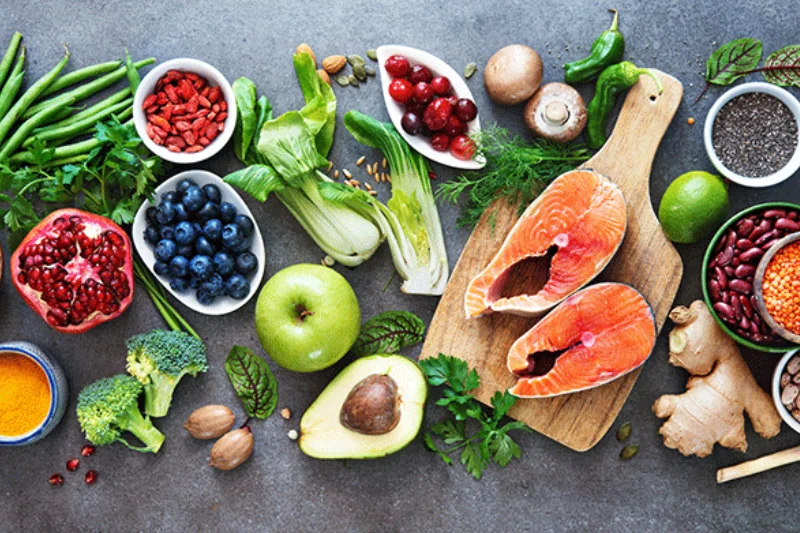Eating High nutrition foods on a budget can seem like an impossible task, but with a few helpful tips, it doesn’t have to be. Eating foods that are full of nutrition and flavor, while still sticking to your budget can be more achievable than you think. With 10 simple tips, you can start cooking healthy meals that taste great and are easy on your wallet. Whether you’re stocking up on pantry staples or making sure you’re getting your daily servings of fruits and vegetables, you can make sure you’re eating nutrient-rich foods without breaking the bank. From bulk buying to meal prepping, these tips will help you create meals that are delicious and budget friendly. So, let’s get cooking!
Here is The List Of 11 High-Nutrition Foods on a Budget
1. Stock up on pantry staples
Getting your pantry stocked up with plenty of nutritious staples will help you make easy and cost-effective meals. From whole grains, beans, nuts, seeds, and legumes to canned beans, tuna, and peanut butter, there are plenty of items to keep in your pantry that make for great healthy meals. Try making a list of staple items you use frequently, and set a price limit for each item. This will help you stay within your budget while still stocking up on nutritious staples. If you have any food allergies or preferences, be sure to keep those in mind and include those items in your list as well. You don’t want to run out of staples in the middle of cooking a meal and have no way to replace or modify the recipe to make it allergy-free. Keeping a well-stocked pantry can make meal planning easy, and it is also a great way to save money. Having plenty of pantry staples on hand can help you avoid buying expensive convenience foods and takeout. And, with a few extra items on your grocery list, you can make healthy and easy meals at home that are both cost effective and nutritious.
2. Shop in bulk
One of the best ways to save money while eating more nutritious foods is to shop in bulk. From buying toilet paper to flour, there are plenty of items that you can purchase in bulk and store at home. For example, you can buy flours that you use frequently, such as whole wheat and white, oats, or a variety of other grains from bulk bins, which can help you save money compared to buying smaller containers at the grocery store. Once you have these items stored at home, you can easily make healthy meals that are full of inexpensive and nutritious staples. These can range from cookies and cakes to salads and sandwiches, and are relatively easy to make, even for the kitchen novice. These meals are also easy to modify to suit your taste buds, diet, and any allergies or dietary preferences you may have.
4. Buy frozen fruits and vegetables
While fresh fruits and vegetables are always best, they are not always the most budget-friendly. Frozen fruits and vegetables are often just as healthy and nutritious as fresh, but they tend to be a lot cheaper. Frozen fruits and vegetables are already blanched, which removes any excess water and helps them retain more vitamins, minerals, and fiber. Plus, they come in easy-to-use bags that you can quickly reheat and add to just about any meal. Choosing frozen fruits and vegetables over fresh can save you anywhere from $1 to $10 per serving. Frozen fruits and vegetables are also an easy way to add more servings of fruits and vegetables to your diet. With most frozen fruits and vegetables, you can get two or more servings per bag. This is great if you are trying to increase your daily servings of fruits and vegetables but sometimes forget to buy fresh produce.
5. Shop at farmer’s markets
While many farmer’s markets can be very expensive, they are also a great way to buy fresh, local produce at a discounted price. If you have a farmer’s market in your area, try going during off-peak hours. This will help you avoid crowds and the higher prices of peak hours. If you have a specific recipe in mind, shop for those specific items. If you’re just shopping for fresh produce, try to stick to items that are in season. This will help you save money, since you will be buying them during their harvesting season.
6. Use coupons
If you love a particular brand or item, but it is a little out of your budget, try looking for coupons or sales at your local grocery store. Be sure to check out online coupon websites as well, as many of them have coupons for brand name items. Using coupons can make items that are a bit on the higher side of the price spectrum much more budget-friendly. You can also find coupons for items that are normally much cheaper, such as rice, beans, and oatmeal. Using coupons when you shop can help you avoid overspending, while also allowing you to stock up on more nutritious items.
7. Meal prep in advance
If you are trying to eat healthier, but find you’re always on a tight budget, meal prepping is a great way to save money and eat more nutritious foods at the same time. By prepping some meals, such as soups and stews, in advance, you can save money on your weekly grocery bill. Bulk cooking and freezing your own food is also a great way to keep your costs down. Cooking and freezing meals from your own ingredients is a much healthier alternative to buying frozen meals, which are often full of preservatives and additives. Cooking your own meals at home can also help you avoid eating out, which can be very expensive.
8. Try budget-friendly recipes
If you’re trying to eat healthier, but don’t know where to start, try browsing recipe websites for budget-friendly recipes. Many recipe sites offer plenty of easy and nutritious recipes that are great for a budget. Shop for ingredients that are on sale and are inexpensive, such as rice, beans, oats, and vegetables, and try using them in recipes. This can help you make delicious, nutritious meals at home that are easy on your wallet.
9. Buy generic brands
Whether you’re shopping for food or beauty and health products, try buying generic brands. These are often cheaper than name brands and can save you money. Although many people think that only expensive products are better, this is not always the case. Instead of buying the more expensive brand, try the generic alternative. You might be surprised to find out that they work just as well. Smell, texture, and taste can all be similar between brands, so there is no reason to spend the extra money when you don’t have to.
10.Take advantage of sales
If you have a specific item in mind that you would like to buy, but it’s a little out of your budget, keep an eye out for sales. Many grocery stores have a sale section, where items are discounted because they are close to their expiration date. Pulling up a store’s app on your phone can help you easily keep track of items that are discounted. If you find an item that you want but is a little out of your price range, check to see if there is a sale on that item.
11. Eat fewer animal products
Eating more plant-based foods is not only better for the environment, it’s also cheaper. By eating less meat and dairy, you can save money. This can be helpful for those on a budget because meat and dairy products are some of the most expensive items at the grocery store. Mixing in a few more plant-based meals each week can help you save on your grocery bill.
Conclusion
Eating more nutritious foods can be easier than you think. With these 10 easy tips, you can start cooking more healthy meals that are easy on your wallet as well. From stocking up on staples, to buying frozen fruits and vegetables and shopping at farmer’s markets, these tips will help you create nutritious meals that are great with any budget.





